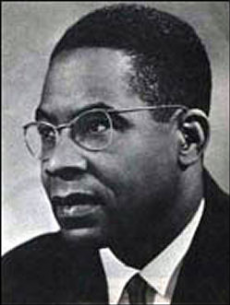
Email: nadege.preston@hotmail.com
Total Article : 82
About Me:Hi I’m Nadege and I study French at the University of Leeds, and I have just completed my third year abroad in Montpellier studying literature and enjoying the sunshine! I love art; painting and being creative, as well as photography and baking. Travelling is my favourite hobby at the moment; experiencing the French language and culture. I hope you enjoy reading some of my articles!

Aimé Césaire is an intellectual who is known for his poetry and the fact that he is an influential politician. He was born in Basse-Pointe in Martinique where he lived until the 1930s as he continued his studies in Paris. Césaire intended to create poetry to make the world understand the African identity and to demonstrate the injustice and the poor treatment of slaves. His work on 'Cahier d’un Retour au Pays Natal/Notebook of a Return to The Native Land', published in 1939 (after his return to Martinique in 1936), is a reflection about the destructive power of colonialism and the resistance to racism.
The main concept in the 'Notebook of a Return to the Native Land' is that of negritude. This concept was founded by Senghor, Damascus and Césaire who were two friends of Césaire. Negritude is a literary revolt. Césaire uses poetry to fight against the repression of the 'blacks' and rebel against the racism of the Europeans.
In the 'Notebook of a Return to the Native Land', Césaire uses an extensive vocabulary with words in Creole as well as Métropolitain French. These words, which he uses in his poetry, make it difficult to understand and critique as the average reader would not understand the sentences and this shows that his poetry may appear strange to many French readers. However, the reason why Césaire has written in this way is because he is part of the Parisian elite, so he knows words unknown to the rest of French society. Césaire also wrote with Creole words which are generally unknown, apart from in the Caribbean as the Creole patois is spoken by the Black Caribbean, where is located the Martinique. Césaire had studied in the high school Schoelcher, located in Fort-de-France in 1924, where he learnt Caribbean literature, but he also learnt French literature when he went to the Lycée Louis-le-Grand in Paris in 1931. Consequently, he uses a mixture of the two literatures because they form part of Césaire’s culture.
In addition to this, Césaire’s book consists of long sequences of prose and free verse that are not numbered and lack in order. The syntax of the poems are different to that of other French poets because Césaire does not use formal and conventional features, thus adding an unusual dimension when the reader reads the book.
An important extract taken from the book focuses on a slave on a tram. This extract enables the reader to understand the consequences of colonialism. Slavery was first demonstrated with the personification of poverty. Poverty is described as having the characteristics to be able to damage the body of the slave physically. By doing this, Césaire shocks the reader and although the text is hard to understand due to the extensive vocabulary, he simply states that poverty affects the slave’s eyes, one of the negative effects of slavery and thus colonialism.
IMAGE URL
http://www.grioo.com/images/rubriques/6/5848.jpg

0 Comment:
Be the first one to comment on this article.